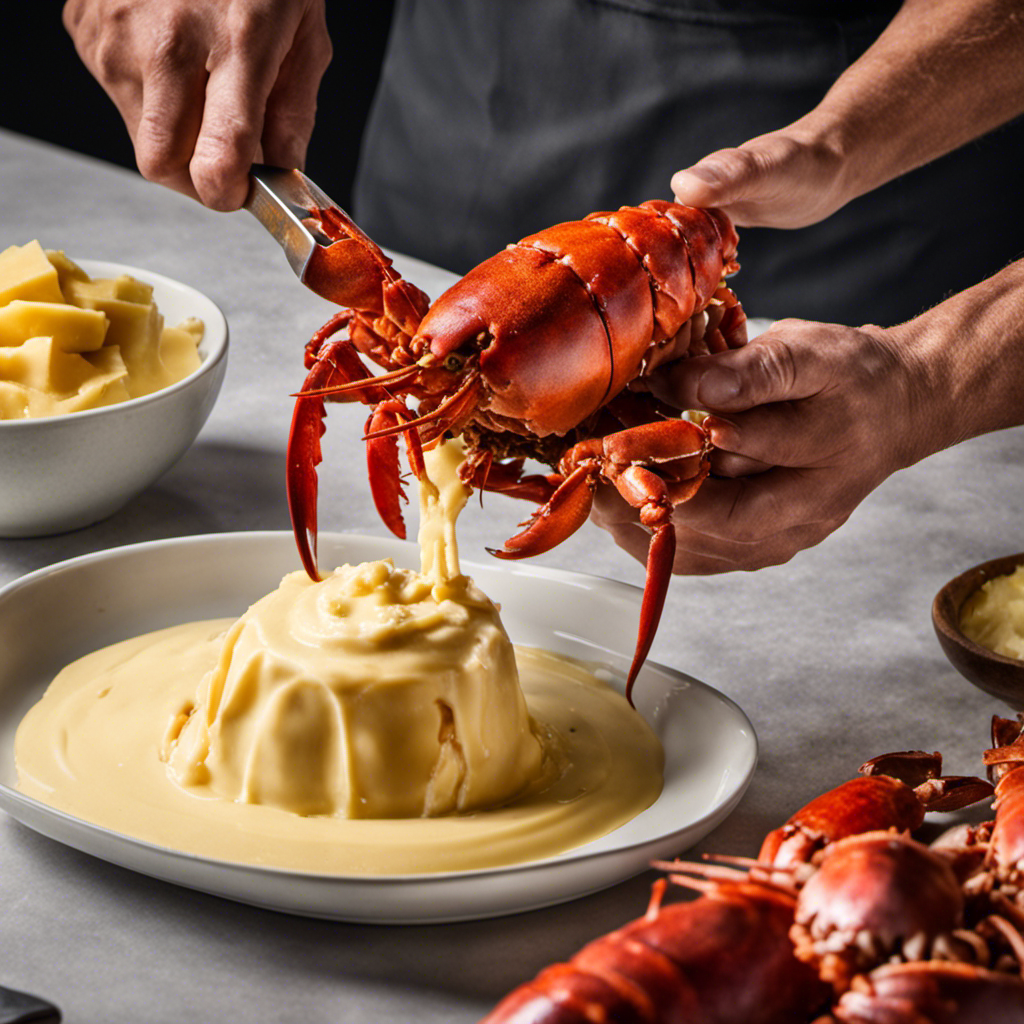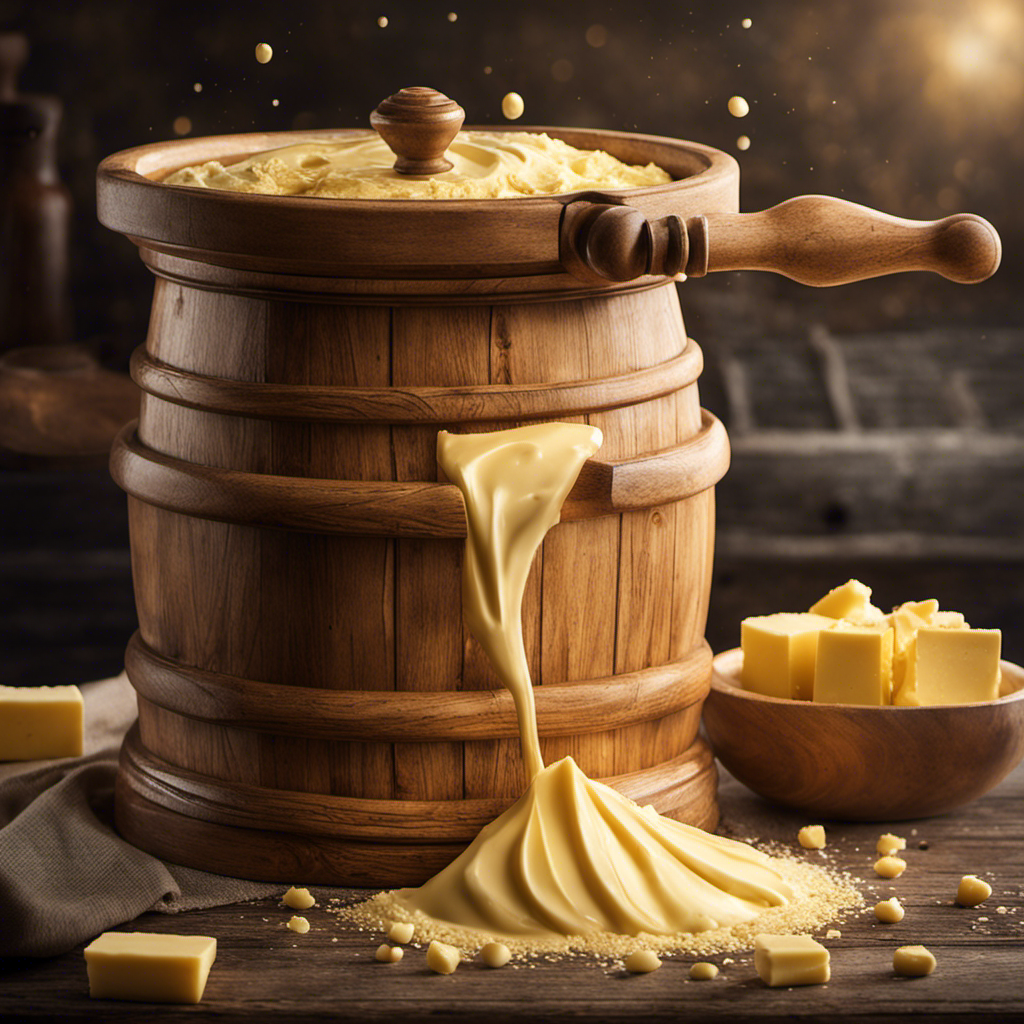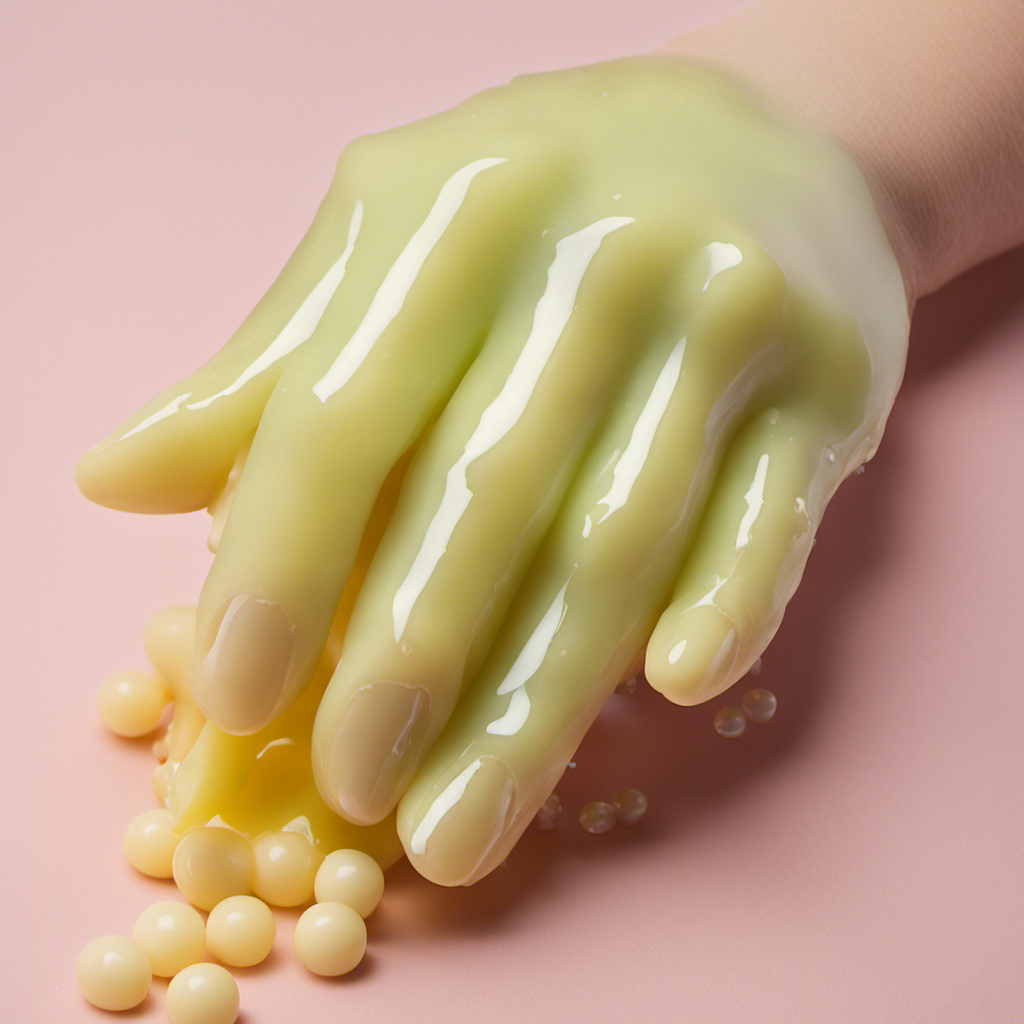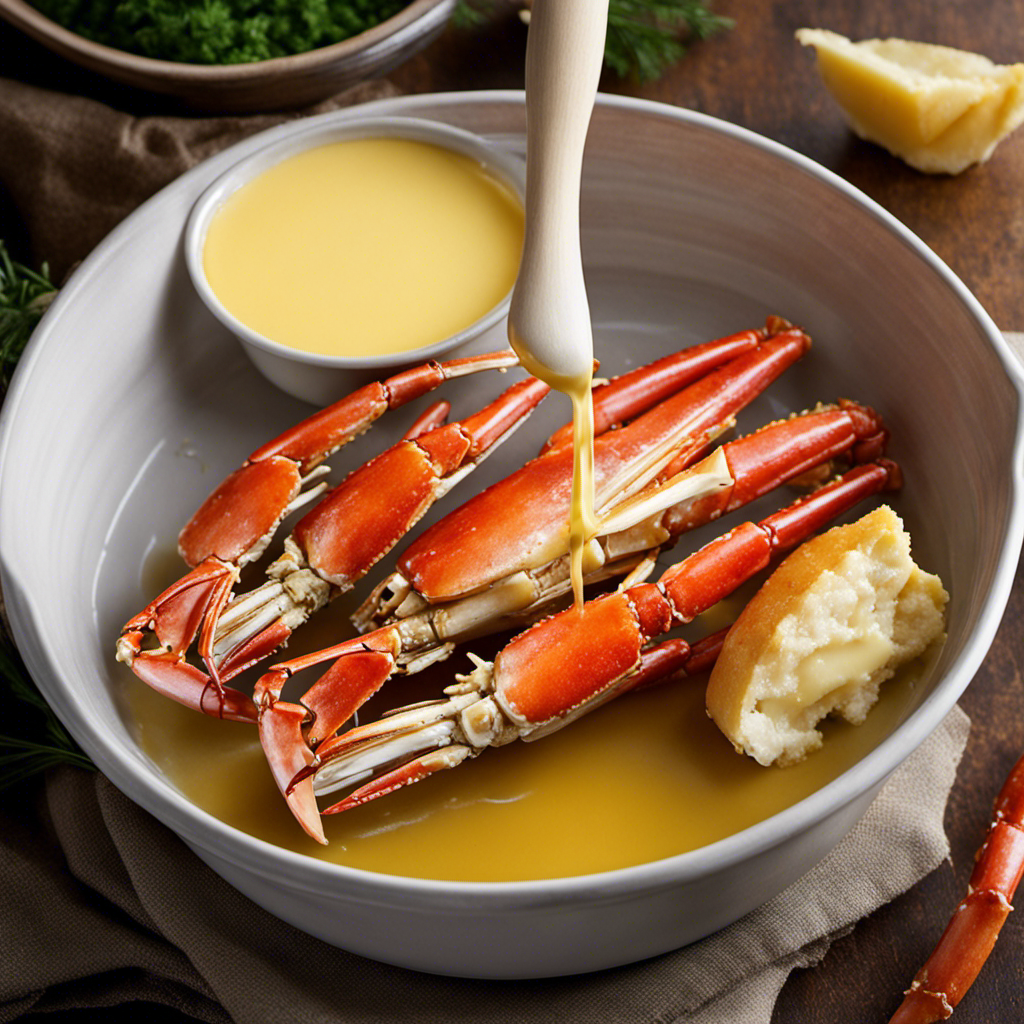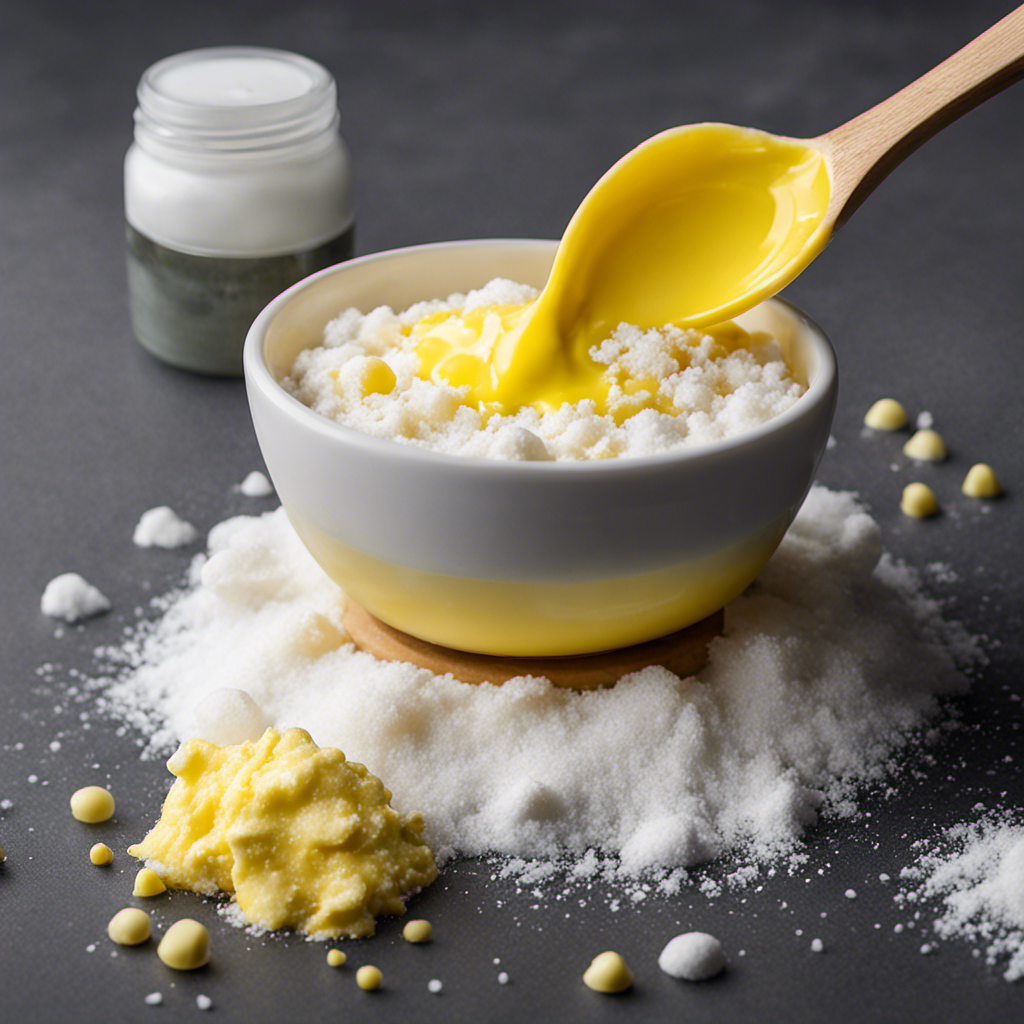I have always thought that the key to a truly luxurious seafood dish is butter.
And when it comes to lobster, there’s no better way to enhance its rich, delicate flavor than with homemade lobster butter.
In this article, I’ll share with you my tried-and-true method for making the most luscious, flavorful lobster butter right in your own kitchen.
Get ready to elevate your lobster dishes to a whole new level of deliciousness.
Key Takeaways
- Choosing a lobster: Consider size and freshness, look for lively and active lobsters with shiny shells and clear eyes.
- Extracting lobster meat: Twist off claws and legs, crack open body shell, use a small knife to remove remaining meat from crevices, check the tail for majority of the meat.
- Making the base for lobster butter: Gather lobster shells, simmer with water, onions, carrots, and celery, strain the liquid and enhance with herbs and spices.
- Infusing butter with lobster flavor: Infuse melted butter with lobster meat, experiment with alternative seafood options and herbs/spices, use in dishes like lobster bisque or grilled seafood.
Choosing the Best Lobster
When choosing the best lobster, it’s important to consider the size and freshness. The size of the lobster determines the amount of meat you will get, so it’s essential to choose one that is big enough to satisfy your appetite.
As for freshness, look for lobsters that are lively and active, with shiny shells and clear eyes.
Now, let’s talk about the best lobster types and cooking techniques. The Maine lobster is known for its sweet, tender meat, making it a popular choice. Another great option is the spiny lobster, which has a delicate flavor and firm texture.
When it comes to cooking, steaming and grilling are popular techniques that preserve the natural flavors of the lobster.
Preparing the Lobster for Butter
First, you’ll need to start by removing the meat from the lobster shells. This is an essential step in preparing lobster shells for creating a rich and flavorful lobster stock. To do this, you’ll need a sharp knife and a little patience. Carefully crack open the shells and extract every bit of meat, being careful not to leave any behind. Once you have separated the meat from the shells, set the meat aside for another use, such as lobster butter or a delicious lobster salad. Now, you can move on to creating the lobster stock. This is done by simmering the shells with aromatic vegetables, such as onions, carrots, and celery, along with herbs and spices, in a large pot of water. The result is a fragrant and savory liquid that forms the base for many seafood dishes.
To engage you further, here’s a table summarizing the steps to prepare lobster shells and create lobster stock:
| Steps to Prepare Lobster Shells | Steps to Create Lobster Stock |
|---|---|
| 1. Remove the meat from the shells. | 1. Simmer shells with vegetables, herbs, and spices. |
| 2. Set the meat aside for later use. | 2. Allow the mixture to cook for at least an hour. |
| 3. Crack open the shells carefully. | 3. Strain the stock to remove solids. |
| 4. Ensure no meat is left behind. | 4. Use the lobster stock as a base for seafood dishes. |
Extracting the Lobster Meat
To extract the tender lobster meat, carefully crack open the shells and use a sharp knife to separate every bit from the shells.
There’s something incredibly satisfying about cracking open a lobster shell and discovering the succulent meat hidden within. It takes a bit of patience and finesse, but the reward is well worth it.
Start by twisting off the claws and legs, then gently crack open the body shell to reveal the sweet, delicate meat. Use a small sharp knife to carefully remove any remaining meat from the crevices. Don’t forget to check the tail, where the majority of the meat is found.
Once you have extracted all the meat, set it aside and get ready to make the base for the lobster butter.
Making the Base for the Lobster Butter
Once you’ve extracted all the meat, it’s time to start creating the base for your delicious lobster butter. Making lobster stock is the key to achieving that rich and flavorful taste.
To begin, gather the lobster shells and place them in a large pot. Add water, onions, carrots, and celery to the pot and bring it to a simmer. Let it cook for about an hour, allowing the flavors to meld together.
Once done, strain the liquid, discarding the solids. Now, it’s time to enhance the stock with herbs and spices. Add a sprig of fresh thyme, a couple of bay leaves, and a pinch of crushed red pepper flakes. Finally, season with salt and pepper to taste.
Your lobster stock is now ready to be used as the base for your delectable lobster butter.
Infusing the Butter With Lobster Flavor
I love the rich and indulgent flavor of lobster. One of my favorite ways to incorporate it into my cooking is by infusing butter with its delicious taste.
The lobster-infused butter technique is a simple yet effective way to elevate any dish. It adds a luxurious and decadent flavor that enhances the overall dining experience.
Lobster-Infused Butter Technique
Mix the melted butter with the lobster meat to infuse the flavors. This technique is a game-changer when it comes to adding a rich and luxurious taste of lobster to your dishes. But what if you don’t have lobster on hand or want to explore alternatives? Fear not, there are several options that can give you a similar taste and elevate your recipes. Consider using shrimp, crab, or even scallops to create a seafood-infused butter. You can also experiment with herbs and spices like tarragon, dill, or paprika to enhance the flavors. Once you have your lobster-infused butter ready, the possibilities are endless. Use it to make lobster bisque, drizzle it over grilled seafood, or spread it on warm crusty bread. Get creative and let the decadent flavors of lobster butter take your culinary creations to new heights.
| Lobster-Infused Butter Alternatives | Using Lobster Butter in Recipes |
|---|---|
| Shrimp | Lobster Bisque |
| Crab | Grilled Seafood |
| Scallops | Warm Crusty Bread |
| Herbs (Tarragon, Dill) | |
| Spices (Paprika) |
Enhancing Butter With Lobster
To enhance the flavor of your butter, consider infusing it with the decadent taste of lobster. Lobster butter adds a rich and luxurious twist to your dishes, elevating them to a whole new level of deliciousness.
One way to use lobster butter is in seafood pasta. Imagine the creamy, buttery sauce coating every strand of pasta, perfectly complementing the briny sweetness of the seafood. The lobster-infused butter adds depth and complexity that takes the dish to a whole new level.
But lobster butter isn’t just for seafood. It can also be used in steak recipes. The buttery richness of the lobster pairs beautifully with the savory flavors of a perfectly cooked steak, creating a mouthwatering combination that will have your taste buds singing.
Flavorful Lobster Butter
After creating the delicious lobster butter, I couldn’t wait to explore all the ways I could incorporate its rich, savory flavor into my favorite seafood dishes. The possibilities seemed endless!
One of the easiest ways to use lobster butter is by simply melting it and drizzling it over grilled lobster tails or steamed crab legs. The butter enhances the natural sweetness of the seafood, adding a luxurious touch to every bite.
But that’s not all. I also discovered that incorporating lobster butter into sauces and dressings takes them to a whole new level. I started by adding a spoonful of lobster butter to a creamy garlic sauce for pasta, and the result was absolutely divine. The butter gave the sauce a velvety texture and a depth of flavor that was unmatched.
I also experimented with lobster butter vinaigrette dressings for salads. The combination of the butter, lemon juice, and herbs created a tangy and luxurious dressing that elevated simple greens into something extraordinary.
Incorporating lobster butter into seafood dishes, sauces, and dressings is a surefire way to take your culinary creations to new heights. The possibilities are endless, and each bite will be a delight for your taste buds.
Storing and Using Your Homemade Lobster Butter
When it comes to homemade lobster butter, knowing how to properly store it is key to maintaining its freshness and flavor. The shelf life of lobster butter can vary, but it typically lasts for about one to two weeks when stored in an airtight container in the refrigerator.
As for its culinary applications, lobster butter is incredibly versatile and can be used to enhance the flavor of various dishes. For example, it can be added to seafood pastas to give them a rich and savory taste. It can also be used to add a delicious twist to grilled vegetables, providing them with a buttery and slightly sweet flavor. Additionally, lobster butter can be spread onto freshly baked bread, creating a delectable and indulgent treat.
With its rich and flavorful profile, lobster butter is a wonderful addition to any kitchen. Its versatility and ability to elevate dishes make it a favorite among seafood enthusiasts. So, next time you make lobster butter, remember to store it properly and explore the many culinary possibilities it offers.
Shelf Life and Storage
The shelf life of lobster butter is typically around 1 to 2 weeks if stored in an airtight container in the refrigerator. Proper storage is essential to maintain its freshness and flavor.
Here are some tips to ensure you get the most out of your homemade lobster butter:
-
Use an airtight container: This will prevent any air from getting in and causing the butter to spoil faster.
-
Keep it in the refrigerator: The cool temperature will help preserve the butter and extend its shelf life.
-
Label and date it: It’s important to keep track of when you made the lobster butter, so you know when it’s time to use it or discard it.
Versatile Culinary Applications
Now that we’ve discussed the shelf life and storage of lobster butter, let’s delve into its versatile culinary applications.
Lobster butter is a gourmet ingredient that can elevate any dish with its rich and savory flavor. Its uses in the culinary world are endless, making it a must-have in every chef’s arsenal.
From simple pasta dishes to indulgent seafood bisques, lobster butter adds a luxurious touch to any recipe. Spread it on warm bread for a decadent appetizer, or melt it over grilled steak for a surf-and-turf sensation.
You can even use it as a base for sauces or dressings, adding a burst of flavor to your creations. Whether you’re a professional chef or a home cook, incorporating lobster butter into your recipes will surely impress your guests and leave them craving for more.
Frequently Asked Questions
How Long Can Homemade Lobster Butter Be Stored in the Refrigerator?
Homemade lobster butter can be stored in the refrigerator for up to one week. It’s important to follow proper storage guidelines to ensure its freshness and taste.
Can I Use Frozen Lobster Meat to Make Lobster Butter?
Sure, you can use frozen lobster meat to make lobster butter. It’s a convenient alternative if fresh lobster isn’t available. The process involves cooking the frozen meat, extracting the flavorful juices, and combining them with butter.
Can I Substitute Regular Butter With Margarine or a Plant-Based Alternative?
Yes, you can substitute regular butter with margarine or a plant-based alternative. Margarine provides a similar texture and taste, while plant-based alternatives offer the benefits of being dairy-free and lower in saturated fat.
Can I Use Cooked Lobster Shells to Make the Base for Lobster Butter?
Sure, using cooked lobster shells to make lobster butter is a creative way to utilize leftovers. It adds a delicious seafood flavor to dishes like lobster bisque. Plus, it’s a sustainable practice that reduces food waste.
Are There Any Alternative Methods to Infuse the Butter With Lobster Flavor, Besides Using the Shells?
There are alternative methods to infuse butter with lobster flavor besides using the shells. Some options include using lobster stock, adding chopped cooked lobster meat, or incorporating lobster seasoning into the butter.
Conclusion
After going through the process of selecting the perfect lobster, extracting the succulent meat, and infusing it with rich buttery goodness, I can confidently say that making lobster butter is a culinary adventure worth embarking on.
The combination of the delicate lobster meat and the creamy, flavorful butter creates a symphony of flavors that will transport your taste buds to new heights.
So why settle for ordinary butter when you can elevate your dishes with a homemade lobster butter that is sure to impress?
Dive into this delicious journey and never look back!
